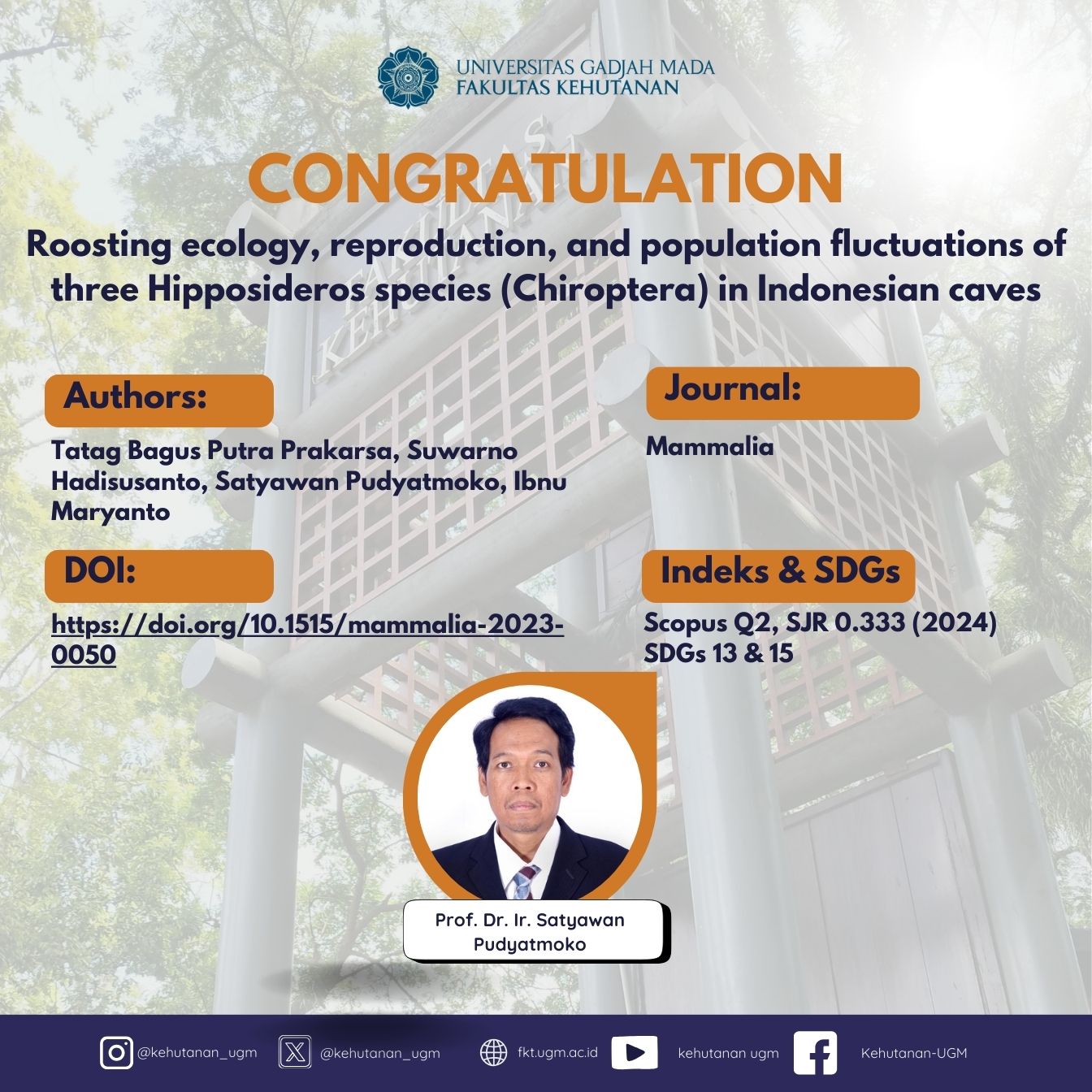
Abstract
Hipposideros spp. are insectivorous bats and karst cave dwellers. This study aimed to study the roosting ecology, reproduction, and population fluctuations of three species H. diadema, H. larvatus, and H. ater in Gunung Sewu Karst region, Indonesia. Age and reproductive status of individuals were identified and analyzed using a combination of forearm length (FA) and body mass grades (W). Multiple regression analysis was used to determine the correlation between population size, rainfall and population structure based on FA, reproductive status, and W. Crude birth rate (CBR) and general fertility rate (GFR) were used to determine the population’s birth rate and female fertility. The results showed that the population of the three Hipposideros species were quite stable over the year with a peak in January which classified them as monoestrous, with mating, pregnancy, and lactation occurring once a year with no delay between mating and pregnancy. Pregnancy lasted 8–12 weeks and lactation 4–5 weeks. The population structure of the three species tended to be stable over the year. The CBR and GFR values can be used for rapid assessment guidelines in an area.
SDGs:
SDG 13: Climate Action
SDG 15: Life on Land
Link Dokumen:
Download
